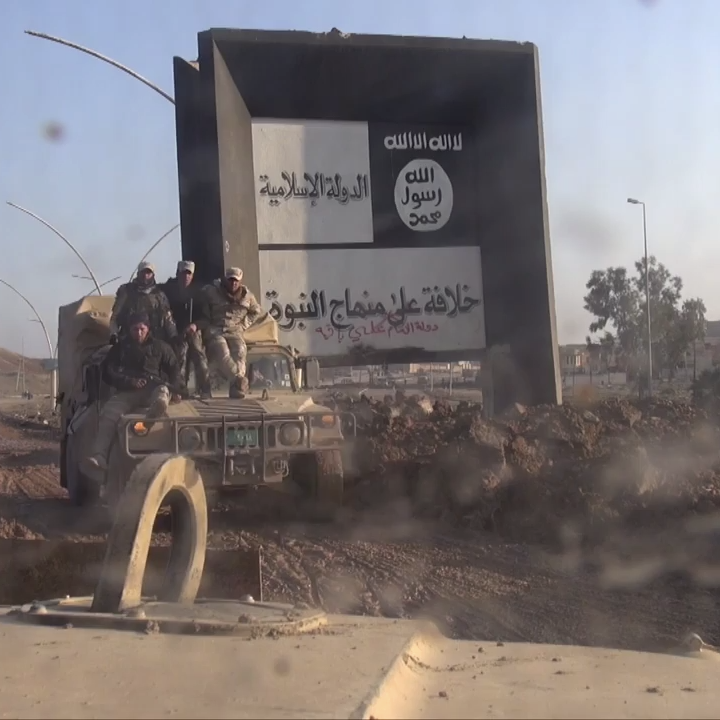Mosul and Raqqa – Remote-Controlled Misery
Reports about the two ex-IS cities, Mosul and Raqqa, drive tears into the eyes of any decent researcher, who still enjoys possession of a warm heart.
Dry facts are quickly told: Mosul is the fifth biggest Iraqi city behind the capital Baghdad, located 400 kilometers north of it on the right bank of Tigris river, opposite the ancient Assyrian city of Nineveh on the east bank. The invasion mainly of US forces from „the coalition of the willing“ in 2003 caused great damage to the city, resistance and a fierce and brutal battle to drive the out led to large-scale further destruction. US counter-insurgency („CoIn“) battle style without much care of the civil population raised alarm and opposition worldwide, with detailed reports surfacing all over the media. Formerly counting a population of around 2 million people, the city has once more suffered greatly under years of IS occupation from 2014-2017 – and yet another terrible battle to expel them. In the beginning of this century, the majority of Mosul’s population were Arabs and a large number of different ethnicities typical of the region, among others Assyrians, Armenians, Turkmens, Kurds and Yazidis. Mainstream Sunni Islam was and still is the largest religion, but until IS moved in, the Salafi movement and Christianity (the latter followed by Assyrians and Armenians), as well as Shia Islam, Sufism, Yazidism, Shabakism, Yarsanism and Mandaeism lived together rather peacefully. IS razed Christian temples to the ground, threatened execution – and all 100’000 followers left town, thus interrupting traditions which had lasted nearly 2’000 years. When Iraqi, Kurdish, American and French coalition forces drove IS out, the fierce battle tore down six of 44 districts of the city and most of the population fled, many with no home to return to.
Syrian Raqqa is much smaller, just 220’000 inhabitants, on the northeast bank of the Euphrates River, about 160 kilometres east of Aleppo. Western legend has it, that the „Syrian opposition“ took over the city in 2013, then IS entered and made it its capital in 2014. Most non-Sunni religious structures in the city were destroyed by ISIL, most notably the Shi’ite Uwais al-Qarni Mosque. Re-taking Raqqa, it was mainly the US air force that turned it to rubble, which caused Damascus to protest.
Looking at these two very different cities, a few shocking similarities describe US strategy and procedures, leaving little doubt as to where global history is heading, should this mindset prevail. When this author toured Baghdad in September 2003, a quite modern high rise with bronzed high-tec rows of windows stuck out in the rubble like from another time: not a single window was broken, nobody allowed inside. That was the oil ministry – other ministries even lacked basic furniture. As to the world famous National Museum – founded by the British scientist, artist and spy Gertrude Bell, opened 1926 as Baghdad Antiquities Museum – reporters quoted to this author GIs „guarding“ the building, in fact: just standing by and watching events, as encouraging Iraqi bystanders to looting: „Take it, Ali, it’s yours!“
As integral part of Washington’s destructive effort appear Tel Aviv’s multiple interferences, bombing Syria often and at will – only to be restrained by delivery of the Russian air defense system S-300. The present Trump government with its closest Israel ties by a US government in US history, does not appear too well equipped to reign in Tel Aviv’s hunger for greater regional influence. Plans like the so-called „Yinon Plan“, to enlarge Israel’s territory on the expense of all neighbors and unto the Turkish border, get support from within the Netanyahu government.
US global strategies tend to do „complete jobs„, like swarms of locusts in agriculture, by erasing history with museums, world famous historical sites and libraries, ethnicities, religions, culture and traditions in addition to governments and countless people, stealing control of natural resources of all kinds. A consultant of president Assad told the author in Damascus 2012, that US companies had tried many times – but in vain – and over many years to purchase (!) the state-owned top-class Syrian health sector. The whole sector. 70’000 Syrian doctors were making a very good living mainly in western Germany before 2011, enjoying citizenship, good incomes and top-level social integration. Especially the Middle East region, rich in so many aspects, seems to „enjoy“ a high ranking on the US „locust agenda“. Watching the effects, grand-scale theft is an issue, destruction and disruption another. Especially in Syria, but as well in Iraq, wherever different religions and ethnicities live together peacefully, the area seems to be attractive to negative forces. The introduction of paid militias with radical agendas in the so-called „Arab Spring“ proves highly effective – aided by corporate media, which enforce global disinformation. The longer this takes, the more some well-known US institutions like the „dream factory“ Hollywood expose themselves as support stronghold for these policies – exceptions reinforcing the general rule.
The traditional picture of “scorched earth” does not suffice to describe results of US influence in the Middle East, with its sad examples Mosul and Raqqa. It stretches to the destruction of history, the long grown richness in religious beliefs and distinct ethnicities, the whole social fabric, traditions, values and bonds of all kinds.
Original Source: http://inforos.ru/en/?module=news&action=view&id=80005


